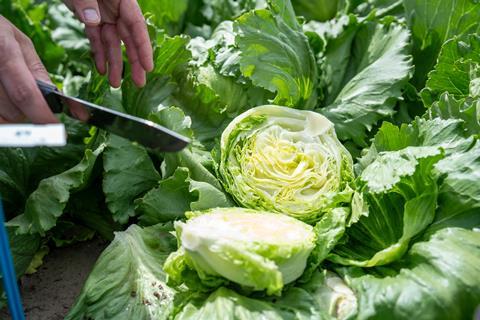Seed company’s new range is helping European producers fight against the devastating disease
Enza Zaden has developed a range of lettuce varieties varieties with Intermediate resistance to Nasonovia ribisnigri, the green lettuce aphid that remains a major challenge for European producers.

The seed specialist has already launched four new iceberg lettuce varieties with Intermediate Resistance to Nr:1, also featuring full Bremia resistance (Bl: 29–41) and high resistance to Nr:0. It said larger seed volumes will be available from mid 2026, supporting commercial sowing from June onwards.
Product manager iceberg Europe, Paul Huijs, said: “Known for its ability to cause significant crop damage, this pest exists in two main biotypes: Nr:0 and Nr:1. While the original Nr:0 biotype could be effectively controlled through genetic resistance, everything changed in 2007 when the Nr:1 biotype emerged, capable of breaking the resistance that had previously protected crops. Since then, both biotypes have been present in European lettuce fields.
“The challenge with Nr:1 is that it cannot be distinguished from Nr:0 by the naked eye, yet it overcomes the traditional resistance genes. In response, Enza Zaden initiated an ambitious breeding program, searching for wild lettuce plants that could withstand Nr:1. Through years of classical breeding, marker-assisted selection, and rigorous field testing, Enza Zaden has succeeded in developing iceberg lettuce varieties with Intermediate Resistance (IR) to Nr:1.”
According to sales manager, Leafy Benelux and Nordics, Sven Paauwe, the breeding company conducted multiple trials. “Nasonovia ribisnigri thrives best in cooler climates, with optimal growth and reproduction between 20 and 24°C.,” he said.
“However, when temperatures rise above 28°C, the aphids experience high mortality, especially in later nymph stages and adults. At this threshold, reproduction ceases, and fertility in winged forms drops significantly. The advantage of our built-in protection is that, unlike external factors such as weather conditions or the growing stage of the heads, it starts working from within.”



